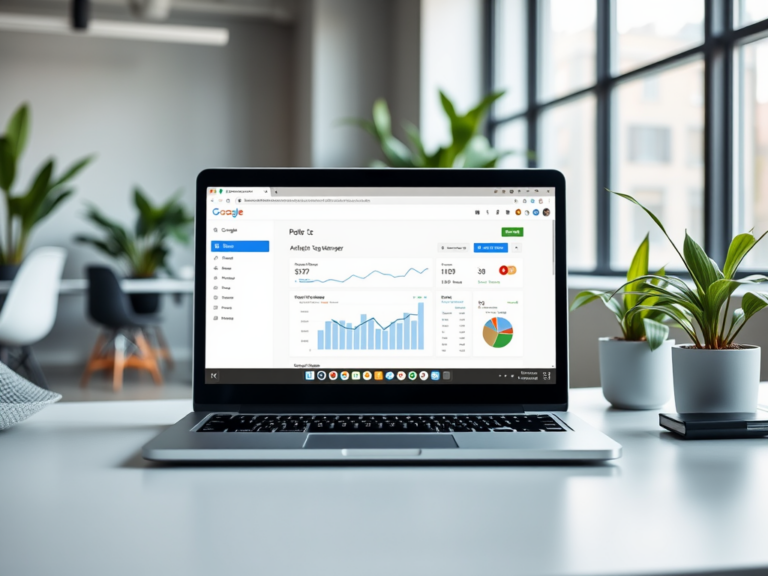When users land on your website, their first impression is often determined by how quickly the page loads. A slow-loading website can lead to frustration, high bounce rates, and ultimately lost business. This article unpacks the ten common reasons your site may be experiencing sluggish performance and offers insights on how to optimize your page speed for an enhanced user experience.
1. Lack of Optimization for Images
Images are vital for visual appeal, but unoptimized images can contribute substantially to slow loading times. Large image files take longer to download, increasing the overall load time of your web pages. Employing compression tools and adopting the right formats, such as JPEG for photographs and PNG for graphics with transparency, can significantly reduce file sizes without compromising quality. Additionally, utilizing responsive images that adapt to the user’s screen size can help to streamline load times. Make sure that images are resized appropriately before uploading them to your website. By prioritizing image optimization, you can make great strides in improving your site speed.
2. Unreliable Hosting Services
Your hosting provider plays a crucial role in how quickly your website loads. Shared hosting environments can lead to slower speeds, especially if multiple sites are competing for bandwidth. It’s important to choose a hosting solution that meets your site’s specific needs, whether it be shared, VPS, or dedicated hosting. The speed and reliability of your server can impact your website’s load time dramatically. Additionally, examine the data center location; if it’s far away from your target audience, latency increases and speeds decrease. Investing in a reputable hosting service might be a worthwhile decision to enhance your site’s performance.
3. Excessive HTTP Requests
Each element on your web page—images, scripts, and stylesheets—requires an individual HTTP request to load. The more components your page has, the longer it takes to gather all the requests, leading to longer load times. Simplifying your design and limiting the number of elements can help reduce HTTP requests significantly. Combining files, such as using a single stylesheet instead of multiple, can also be beneficial. Utilizing CSS sprites to merge image files into one can reduce the number of requests further, thus optimizing page loading speed. By streamlining these resources, you’ll create a much snappier web experience for your users.
4. Plugins and Third-party Scripts
Plugins provide added functionality to your site but can also weigh it down. Each plugin can add additional code that increases load times, particularly if they load scripts from external servers. Regularly review and audit the plugins you are using; eliminate any that are unnecessary or redundant. Additionally, consider how third-party scripts—like ads, tracking tools, and social media buttons—impact performance. Minifying JavaScript and CSS files can help minimize these issues, as can implementing asynchronous loading strategies for non-essential scripts. Efficient management of plugins can greatly enhance your website’s speed and responsiveness.
5. Too Much JavaScript
JavaScript is essential for interactivity, but excessive use can hinder the loading performance of your site. Large JavaScript files and numerous scripts can prevent initial rendering of your page. To tackle this problem, it’s vital to review the amount of JavaScript being utilized on your site. Prioritize critical scripts for initial loading and defer or load non-essential scripts asynchronously. Furthermore, consider reducing the size of your JavaScript files through minification or bundling, which involves combining multiple files into one. Being conscientious about your use of JavaScript can lead to quicker load times and a more pleasant user experience.
6. Server Response Time
One significant factor in loading speed is how quickly your server responds to requests. Several elements can affect server response time, such as the amount of traffic it handles, the resource types, and the web application’s performance. If your server response time is slow, it may be beneficial to analyze server configurations and potential bottlenecks. Conducting regular server performance assessments can help optimize backend operations. Techniques such as caching can also be leveraged to help ease the load on your server, allowing it to respond more quickly to requests. By attending to server speed, you can drastically improve overall site performance.
7. Too Many Redirects
Redirects can provide helpful navigation paths but often contribute to increased loading times. Each redirect creates an additional HTTP request and delays the page rendering process. It’s important to regularly audit your site for unnecessary redirects and eliminate them where possible. Try consolidating your URLs and ensuring that your links point directly to the final destination without intermediary redirections. Streamlining URLs can not only enhance your website’s loading speed but also improve SEO performance. Striving for a cleaner linking structure can lead to a more efficient user experience and quicker access to your content.
8. Not Utilizing Browser Caching
Browser caching allows web browsers to store certain elements of your website locally, meaning they don’t need to be downloaded anew each time a visitor returns. When caching isn’t set up properly, users have to reload every file on each visit, which can slow down the experience significantly. Implement caching strategies by modifying your server settings to specify how long certain file types should be stored. Such configurations can drastically reduce load times for repeat visitors, enhancing user retention and satisfaction. By taking advantage of browser caching, you can improve your site’s performance and decrease the overall server workload.
9. Heavy Use of Web Fonts
Web fonts add unique typography to your site but can be heavy on resources if not used judiciously. They require additional HTTP requests that could slow down your loading times. Opting for the standard system fonts can help streamline your site, but if web fonts are a must, limit the number of font styles and weights you choose. Additionally, make sure to preload important font files to reduce lag during loading. Keeping your font usage light and efficient can aid in keeping loading times faster for users who are eager to engage with your content.
10. Poor Site Structure
A convoluted site structure not only confuses users but also makes it tougher for search engines to crawl and index your pages, leading to slower load times. Evaluate your site’s architecture to ensure it is logically organized and easy to navigate. Implementing a flat hierarchy with fewer clicks to access deep content is beneficial. Utilize internal linking efficiently to guide users and search engines alike. Properly structured sites help decrease load times and improve user experience significantly, leading to higher satisfaction rates and better SEO rankings.
Conclusion
Website speed is pivotal in retaining users and maintaining good SEO standings. The ten reasons outlined—ranging from unoptimized images to poor site structure—are common culprits in slow-loading websites. Understanding these factors equips you to identify and rectify the underlying issues impacting your site’s performance. Regular performance audits, attention to optimization, and strategic planning will help you maintain a swift website. In a digital landscape where speed matters, taking these steps can significantly enhance user satisfaction and conversion rates.
Frequently asked questions
1. What is the ideal loading time for a website?
The ideal loading time for a website is under 3 seconds. Studies show that user engagement declines for sites that take longer to load.
2. How can I test my website’s loading speed?
You can use various online tools to test your website’s loading speed, such as Google PageSpeed Insights, GTmetrix, or Pingdom. These tools provide insights and suggestions for improvement.
3. What benefits does a fast-loading website offer?
A fast-loading website can enhance user experience, reduce bounce rates, improve SEO rankings, and increase conversion rates, ultimately leading to better business outcomes.
4. Can the design of a website affect its loading time?
Yes, a more complex design with numerous elements can lead to slower loading times. Simplifying your design can help improve load speed significantly.
5. Is it worth investing in premium hosting for a faster website?
Investing in premium hosting can greatly enhance your website’s speed and reliability, especially if your site receives significant traffic or relies on complex applications. It’s generally a worthwhile investment for better performance.










